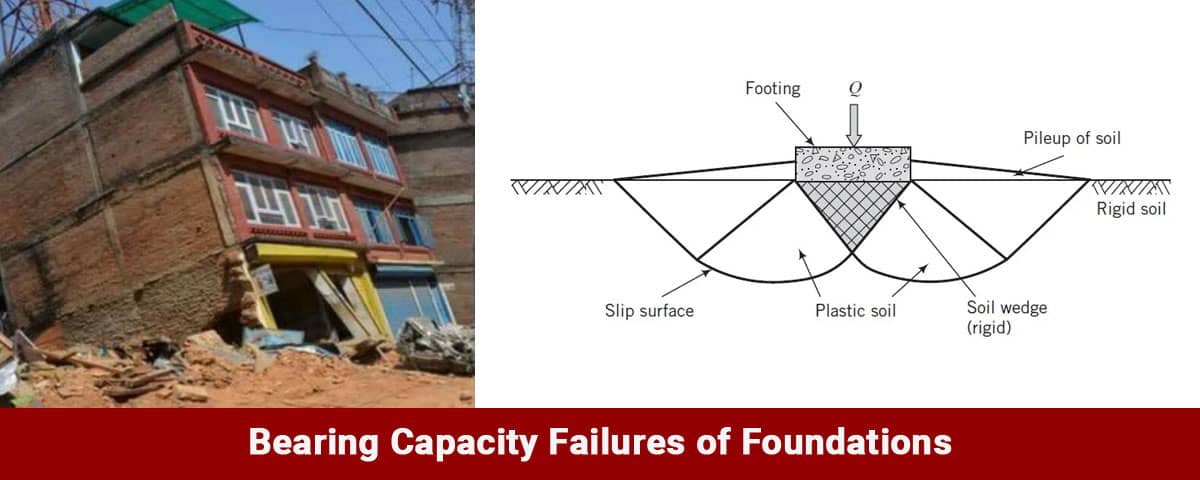Bearing Capacity Failures of Foundations
Bearing Capacity
The bearing capacity of soil refers to its ability to support the loads placed on it. The density and shear strength of the soil are the most important factors. The bearing capacity of a load is also affected by how deeply it is embedded: the deeper the embedding, the more powerful the load.

Ultimate Bearing Capacity (Qu)
Directly beneath the foundation, that is the least amount of shear pressure which will cause the supporting soil to collapse.
Bearing Capacity Failures
Defining bearing capacity failure as the failure of a foundation caused by more stress than the soil can withstand is a difficult task. General shear failure, local shear failure, and punching shear failure are the three main types. A base failure occurs when the shear strength of the soil exceeds the bearing capacity of the soil. That refers to as a failure of bearing capacity.
Types of Bearing Capacity Failures
General Shear Failure
Strip footings rest on loose sand or soft clay. Shear failure occurs in the soil at that load, and the failure surface extends to the ground surface. General shear failure occurs when this occurs. There is always a heave on the sides in general shear failures.
The edge of the base and the ground surface form a continuous, well-defined, and distinct surface of failure. Dense or rigid soils are more susceptible to this loss. The sheer mass surrounding the foot is constantly bulging. The foot tilts when the failure occurs.
We observe considerable soil compression under the foundation as well as the partial formation of the plastic balance. It does not fail immediately, and the foundation does not tilt.
A minor bulging of the soil at the foundation is found where the weak surface does not meet the surface of the earth. That may be indicative of a surface failure. Significant anomalies indicate failure. With a sharp curve top, failure is abrupt and devastating. It goes beyond the foot's edge for a long distance. Plastic balance first appears at the toe edge and extends outward.
Local Shear Failure
A strip footing rests on clay with a medium consistency or the sand with a medium density. There are sudden jerks in the foundation movement when the load reaches a certain value Qu (1). To extend to the ground surface, a substantial movement of the foundation is necessary for the failure surfaces. That occurs under a load of Qu. As the law increases, settlement increases significantly. Local shear failures are the cause of these types of failures. Heaving occurs only when a substantially vertical component exists.
Punching Shear Failure
A failure surface does not extend above the ground. When a load of Qu (1) is applied, there is jerking in the foundation. When the load reaches Qu, the footing fails, thereby increasing the slope and making the load-settlement curve more linear. It occurs when only vertical movement observes.
This curve exhibits a constant rise with no settlement. It should be possible to install a cylindrical control surface at a certain distance from an area with a burden or column.
Control surfaces shall not be subject to shear stresses greater than the specification power. It is often the same as the tensile strength. A slab depth is equal to this distance. By organizing the punching shear, the results of the moment transfer at the column or slab junction are enhanced. Various standards use to measure the punching shear.

